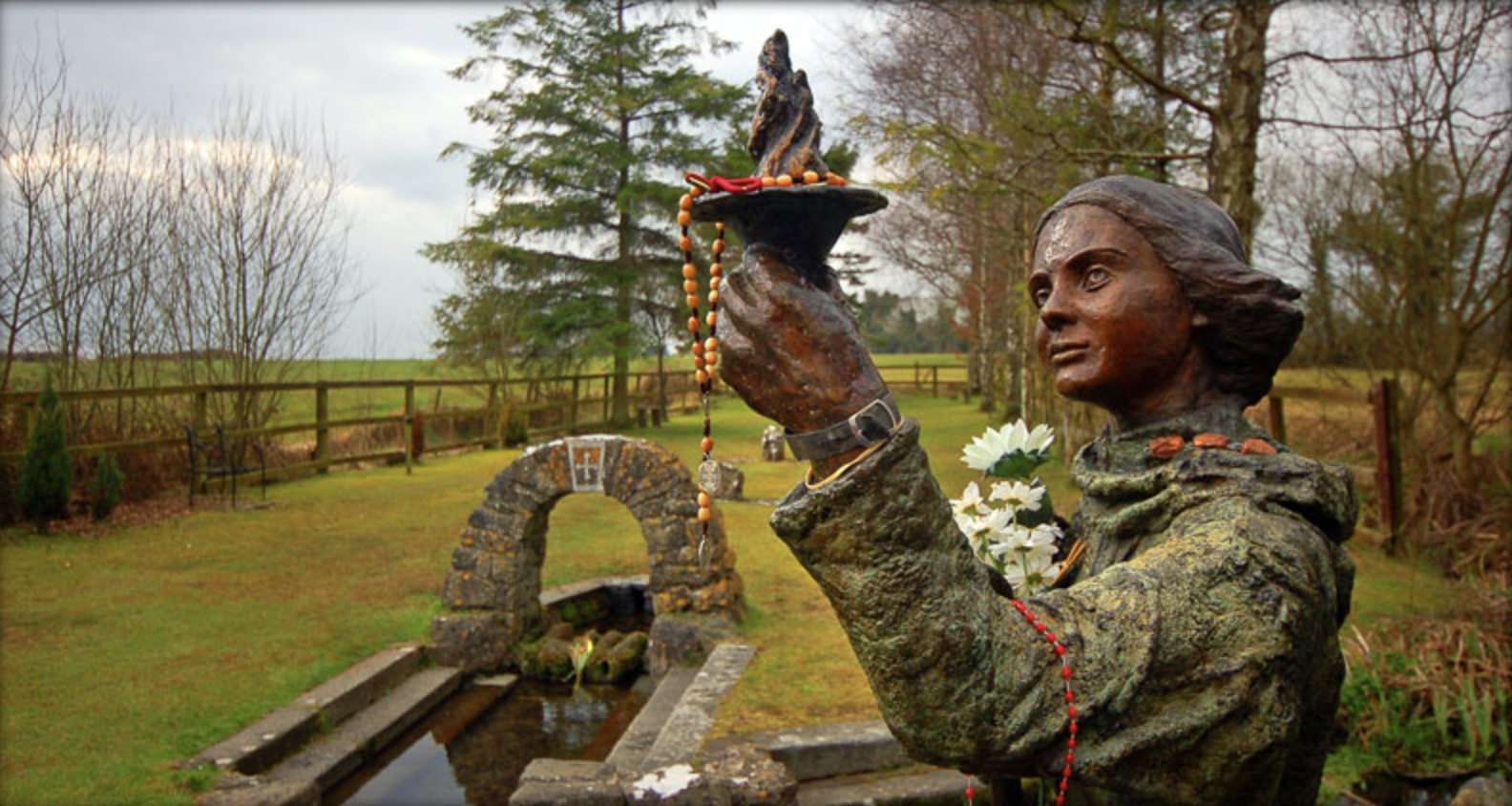The Quickening
This time of year places us between the winter solstice and spring equinox- sometimes called “the quickening”. It's the time of year where we celebrate the first shoots of spring and the sacred flame. Cross-culturally (in pan-European culture, which are really the only cultural regions I'm qualified to speak on) we see themes around protection, triumph over winter, the flame, holy wells + springs, the care and keeping of animals, and candle magic.
This threshold time is typically observed through ritual baking, fire tending, visitation of holy places, and veneration of spring deities. In the Celtic tradition, Imbolc (or Imbolg which means “in the belly”, a reference to birth, the coming of spring, and lambing season) honors St Brigid. (The photo to the left is Brigid's Holy Well in Kildare.) We see Gromnica, a celebration of the returning light, in Slavic traditions- specifically Polish. This is the time when the winter deities and spring deities begin to trade places- a process which completes around the spring equinox. Southern Italy observes Candelora, another day celebrating the return of the light which includes an honoring of the Madonna of Montevergine (lots of queer folklore here!). And in the West we have Candlemas which is within the Christian tradition, marking the end of the Christmas through Epiphany season. Remember- Christian stories and holidays, along with Catholic saints, often hold keys into the deities the people honored prior to colonization. This was deliberate and there is often overlap rather than a firm line between what is pagan and what is Christian.
Regardless of your specific background, we can see the importance of honoring the end of hardest part of winter here in the Northern Hemisphere. And when we see this theme repeated throughout history and culture, we can ask ourselves what traditions and rituals we currently keep to help us honor this time. We may not have any set and ready to go and often have to look back to the old ways to start rebuilding a sense of cyclical living and honoring of land. This often produces a fair amount of grief. Grief that might not have been felt for a few generations.
The way I like to hold this, and encourage students and clients to reflect on, is to notice what themes stand out to us and feel important for the world we currently live in. Rather than recreating the past (which is impossible since we can never totally understand the exact conditions and contextual experiences of our ancestors) we get to revive practices that meet our current conditions, including the land we're currently on. The honoring of St Brigid lives in my ancestry with my people and therefore is a part of my body- but St Brigid is indigenous to Ireland and the British Isles. She's not indigenous to this land, so she's not going to show up here the same way. How can we balance connecting with ancestral deities (which tbh the more I study folkways the more I think what we conceive of as gods/goddesses are land deities/spirits) with the spirits of the land we currently live on? For those of us who are settlers, this is an inquiry we get to be in relationship with.
An example is that Imbolc, in addition to being the marker of the first whispers of spring, also denotes the time of year the ewes begin to lactate which starts off the lambing season. I have no relationship to sheep (yet!) but perhaps I can honor local folks who keep livestock or look into where I might get milk -an Imbolg theme- locally, which supports my local economy and creates land based relationships. Here on the mountain, we're experiencing the depths of winter weather right now. It doesn't quite make sense for me to celebrate the triumph over winter while still in the thick of it, these celebrations are better saved when the thaw comes; another example for ya.
Some other ways you might observe this part of the year:
research the origins of our Groundhog Day- there's a lot out there and you will inevitably find many folktales about weather and creatures that portend weather patterns
contemplate your relationship to land, seasons, and winter
create some protocols for moving from winter to spring (ritual fires? spring cleaning? visiting running water after the freeze?)
engage in an ancestral custom that honors this time of year, feel into what their experience may have been, and practice applying it to the modern day (we see door to door mumming traditions in certain parts of Ireland, look up Biddy Boys, which always feel like acts of community care and mutual aid for example).
*This piece was originally written for my newsletter in late January but I felt it deserved a permanent spot amongst my writings.
